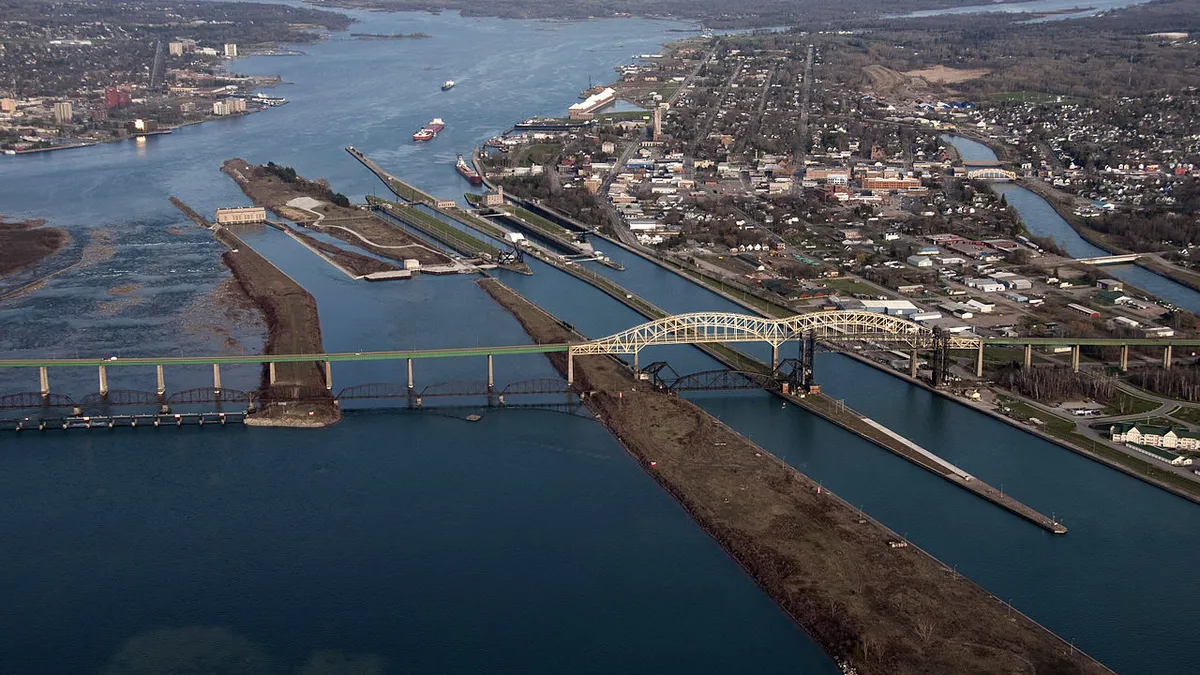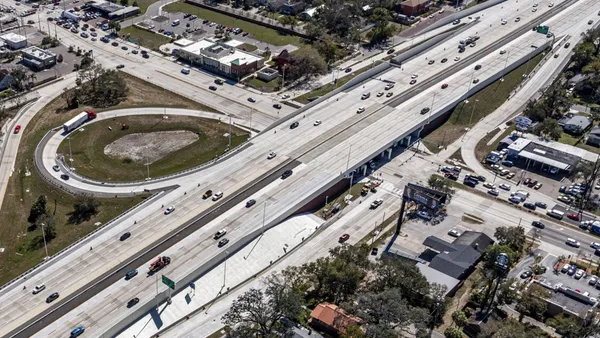Dive Brief:
- The U.S. House of Representatives has passed the multi-billion America's Water Infrastructure Act of 2018, which includes the $3.6 billion Water Resources Development Act of 2018. The development act would see funding for projects like the $922 million replacement lock at Soo Locks in Sault Ste. Marie, Michigan, and when non-federal financing is added into the mix, the value of projects increases to $5.6 billion.
- The Army Corps of Engineers has recommended that one of the four locks, the 50-year-old Poe Lock, be replaced with a new, 1,200-foot lock that will better be able to handle the large freighters that represent 89% of traffic passing through. If the Poe Lock goes offline, it could result in a shipping industry logjam that would not only affect the region but the entire country.
- The largest outlay of federal funds in the water resources measure, however, is $2.2 billion toward the $3.2 billion coastal storm risk reduction and ecosystem restoration, or "coastal spine," from Texas' Sabine Pass to Galveston Bay. The bill now goes to the Senate for a vote, where it is expected to pass. If the Senate acts to authorize the measure, funding for the program still needs to be secured.
Dive Insight:
The House first passed the development act in June. In addition to the coastal spine and locks projects, it allows the Corps to provide maintenance for dams, ports and other anti-flood efforts. The legislation also shelves water infrastructure projects that never got off the ground and uses that funding to pay for new ones.
Aside from direct funding, the federal government also provides loans in order to help states, municipalities and other agencies to pay for their own projects.
The Environmental Protection Agency disburses Water Infrastructure Finance and Innovation Act (WIFIA) loans, and, in August, the agency reported that it had received a record number of letters of interest for the program. Those submitting letters requested a total of more than $9 billion, which is twice what the agency is able to lend. This is a far cry, however, from the $743 billion the agency says is the amount of money needed to tackle the drinking water and wastewater infrastructure needs in this country.
The American Society of Civil Engineers estimates that the cost to fix America's water infrastructure issues is closer to $1 trillion.











